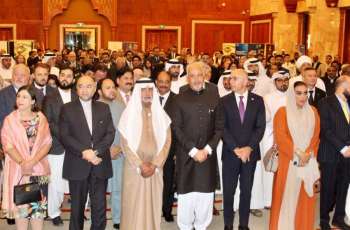MOSCOW/PRAVDINSK (Pakistan Point News / Sputnik - 16th July, 2021) OSCOW/PRAVDINSK, Russia, July 14 (Sputnik), Denis Chernyshenko - A Sputnik correspondent has visited the town of Pravdinsk in Russia's westernmost Kaliningrad Region, which saw one of the greatest victories of French Emperor Napoleon Bonaparte.
You almost certainly have never heard of the "Battle of Pravdinsk" because the town received this name in 1946, when this part of East Prussia became part of the Soviet Union. In 1807, this town had a beautiful German name Friedland, which means "the land of peace." Ironically, peace was the last thing this land has ever experienced.
Pravdinsk was founded at a ford across the Lava River (formerly known as Alle) in 1312 after this territory - which earlier belonged to the Prussian tribe of the Natangians - was seized by the Teutonic knights.
The town was devastated during the 1454-1466 Thirteen Years' War between the Teutonic Order and the Prussian Confederation, and once again by the Swedish troops during the 1655-1660 Second Northern War.
In 1701, the town became part of the Kingdom of Prussia and witnessed the most outstanding event in its history.
After the disaster of Austerlitz in 1805, Austria found itself defeated by Napoleon, but Russia decided to continue the war and, together with the United Kingdom and Prussia, formed a new, the Fourth, coalition against France.
The war started with another disaster for the anti-French forces � on October 14, 1806, Napoleon and his Marshal Louis Nicolas d'Avou destroyed the Prussian army in the twin Battle of Jena-Auerstedt.
However, Russia showed its determination to continue the war and, inspired by its lead, Prussia refused to surrender despite the fall of Berlin.
The Russian army was headed by German-born Gen. Levin August von Bennigsen, who turned out to be a very uncomfortable rival for Napoleon. From February 7-8, the two commanders clashed near the East Prussian town of Preussisch Eylau (today Bagrationovsk), and one of the bloodiest battles of the Napoleonic war ended with no clear winner, leaving both armies bleeding. The next encounter was when Napoleon faced von Bennigsen on the battlefield near Heilsberg (today Lidzbark Warminski in Poland) on June 10, 1807, and the battle once again ended in a draw.
As Napoleon was advancing to Koenigsberg (today Kaliningrad), von Bennigsen decided to cross the Alle River in Friedland and attack the French forces from the right wing ahead of the possible storming of Koenigsberg. The French emperor was unaware of such plans; however, the advanced French forces of Marshal Jean Lannes, who safeguarded the bridge in Friedland, warned Napoleon of the threat.
On June 14, 1807, von Bennigsen and his 65,000-strong army crossed the Alle River and entered into combat with the French forces of Lannes but several hours later Napoleon arrived at the battlefield, bringing the total number of soldiers in the emperor's army to about 80,000.
The right wing of the French army, headed by Marshal Michel Ney, tried to defeat Russia's left flank, led by Gen. Pyotr Bagration, but faced tough resistance. The fate of the combat was determined by a personal initiative of French artillery general Alexandre-Antoine Hureau de Senarmont, who repositioned his battery to just 200 meters (656 feet) away from the Russian infantry and opened devastating fire at the Russian troops.
The defeat of the left wing caused a panic among the Russian troops and they burnt the bridges across the Alle River while retreating, which left the right wing trapped. Napoleon used this opportunity and crushed the remaining Russian troops, with only a small number of them managing to flee the battlefield. Napoleon managed to defeat von Bennigsen in a third attempt, which forced Russian Emperor Alexander I to sign the Treaty of Tilsit, which established peace between Russia and France that lasted until the 1812 invasion by Napoleon.
Today, Pravdinsk is a small and quiet town which is only developing as a tourist destination. First-time visitors can take a relaxing walk through a beautiful and peaceful park along the shores of the Lava River.
The most interesting site of the town is the Late Gothic church of St. George, which was initially Catholic, then turned into a Protestant place of worship and now is an Orthodox church.
Not far from the church, one can visit the grave of Maj. Gen. Nikolay Mazovsky, who was killed in the Battle of Friedland, and the house where Napoleon stayed.
Pravdinsk may not be the main place to visit in the Kaliningrad Region but it is a must-see for people interested in military history and want to deepen their knowledge about Napoleonic Wars.



